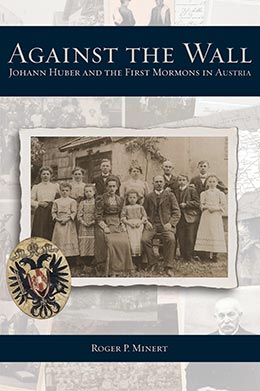Acknowledgments
My search for documents regarding farmer Johann Huber of Rottenbach, Austria, led me to many repositories where I discovered forgotten treasures and where I met very helpful people. The first collection I found and was allowed to copy belongs to the Huber family and has always been in the residence of the Michlmayr farm at Parz 4 in Rottenbach. Current owner Gerlinde Huber Wambacher has supported my research from the very beginning by allowing me to copy all documents and photographs in her possession. She also allowed unrestricted photography on the property and has responded to many e-mails with requests for additional information about the farm. My wife, Jeanne, and I have spent four nights in the rooms built by Johann Huber in 1927 and have enjoyed Gerlinde’s hospitality on many other occasions as well.
Wilhelm (Willi) Hirschmann, a grandson of Huber and now the family historian, likewise allowed me to copy all of his documents. As the principal eyewitness who knew Michlmayr Huber, he granted me an enlightening interview. He now lives in Aggsbach Markt on the Danube River.
The Religious Studies Center at Brigham Young University kindly provided funding in support of my research visits in Austria. Director Thomas A. Wayment recognized the value of the Huber story to the modern LDS reader. As with two of my previous books, the Religious Studies Center provided stellar services of editing and layout under Devan Jensen and Brent Nordgren. To them and their assistants Alison Brimley, Shanna Clayton, Hadley Griggs, Rebecca Hamson, Madison Swapp, Rachel I. Gessel, and Rebekah Weaver, I express my sincere gratitude.
Several staff members of the Austrian National Library and the Austrian National Archives, both in Vienna, were kind to inform me of their collections related to my study and to allow me to see every document I requested. Engelbert Lasinger of the Upper Austrian State Archives in Linz uncovered to me the file entitled Mormonen in Rottenbach with its more than five hundred pages regarding Johann Huber. Also in Linz, Johanna Brandstetter, an archivist for the Roman Catholic Diocese of Linz, searched that collection carefully and allowed me to copy everything dealing with the Catholic priests who interacted with Huber.
Curators Rupert Leeb and Adolf Sickinger of the local history museum housed in the Starhemberg Castle were quick to share information and photographs of the town and the school. Employees in the Rottenbach city hall and the public school searched for documents and photographs to enhance my version of this story. Unofficial Haag town historian Franz Schoberleitner was able to locate several important documents and photographs to augment this history; he also spent several hours studying the records of the Haag Catholic parish in an attempt to locate information about some of the first ten LDS converts in Austria, many of whom were Haag natives. Dr. Franz Pumberger of the Ried County offices provided important details about his predecessors.
Documents made available to me by the LDS Church History Library and Family History Library in Salt Lake City became an important source of information regarding the Church units in Munich, Rottenbach/
The framed photograph of Pastor Josef Schachinger, Huber’s primary foil for nine years, hangs on the wall in the parish office in Rottenbach. Pastor Mag. Paul Böttinger was kind enough to allow my assistants to make a digital image of the photograph, a valuable contribution to this history. We also interrupted his work on two occasions to view the parish history that included important comments by Schachinger regarding Huber and other members of the Rottenbach LDS group.
Particular gratitude is extended to Professor Douglas F. Tobler for his many suggestions designed to improve the manuscript. He was my first history mentor in 1975 and deserves my ongoing respect. His ability to synthesize the details and define the major issues provided inspiration for my account of this complex story.
My research assistant Annie Leishman placed and formatted most of the many images in this book, and Rachel Epps spent many hours in the editing process. As with all of my publications, the final stamp of approval was given by my wife, Jeanne, my ultimate editor. She shared in some of the great discoveries made in Austria, and her years spent in that beautiful land allowed her important insights into the Huber story and the development of the Church there.
Roger P. Minert
Provo, Utah
